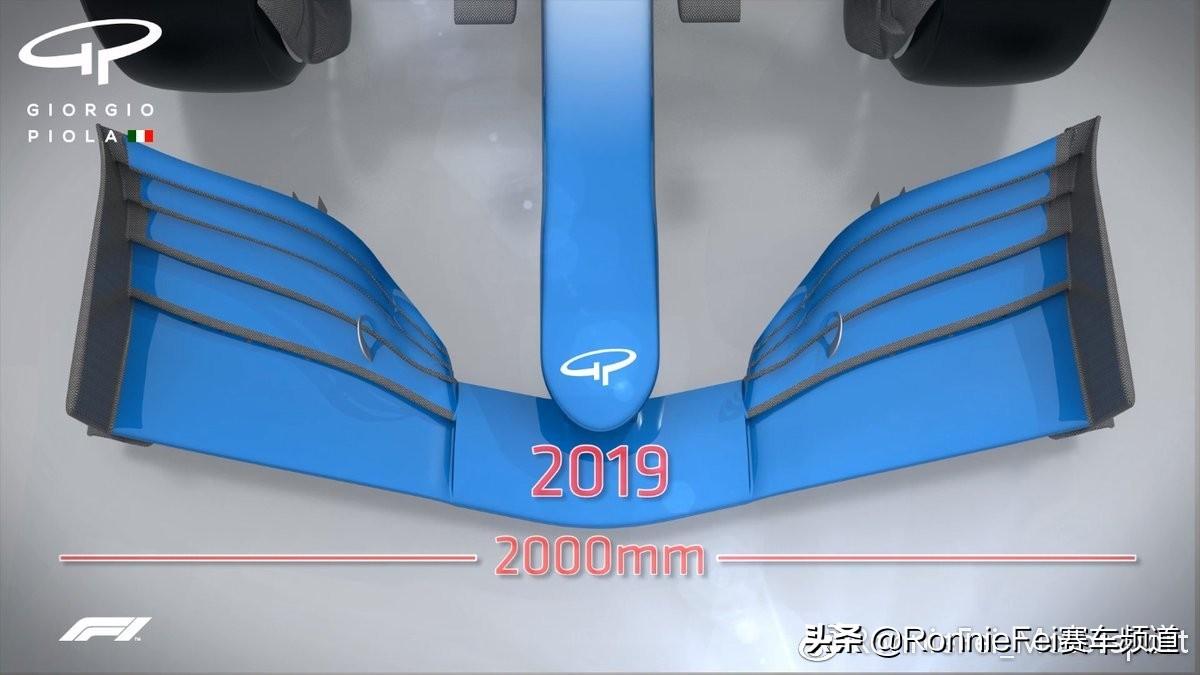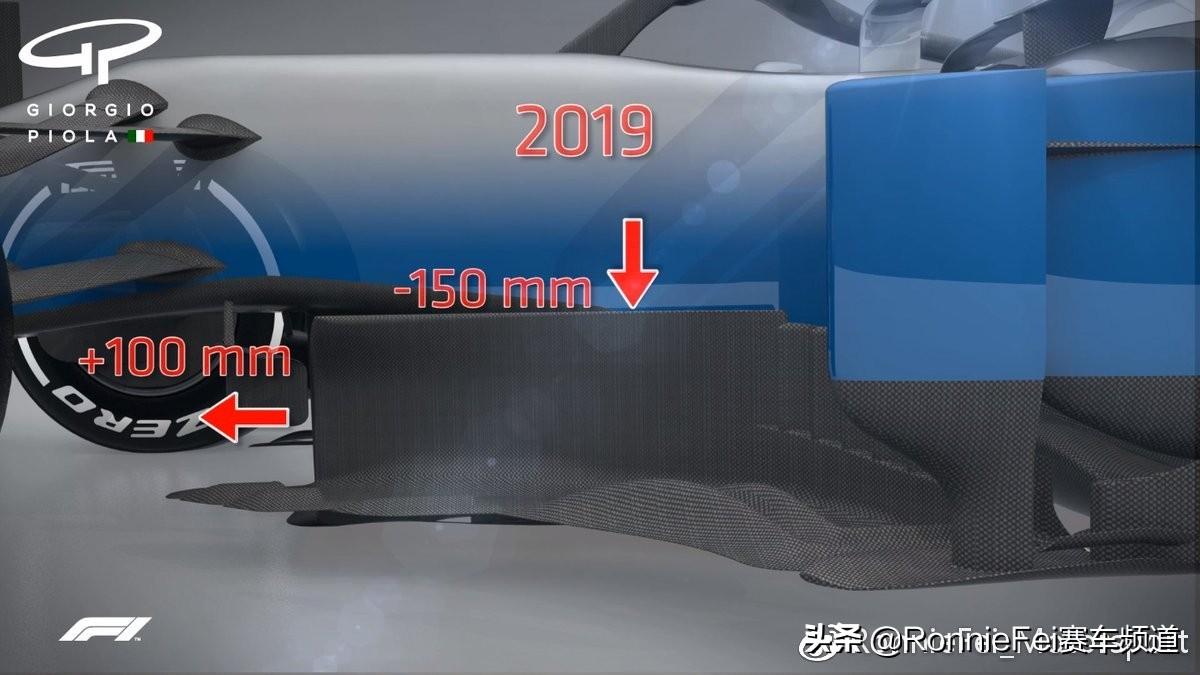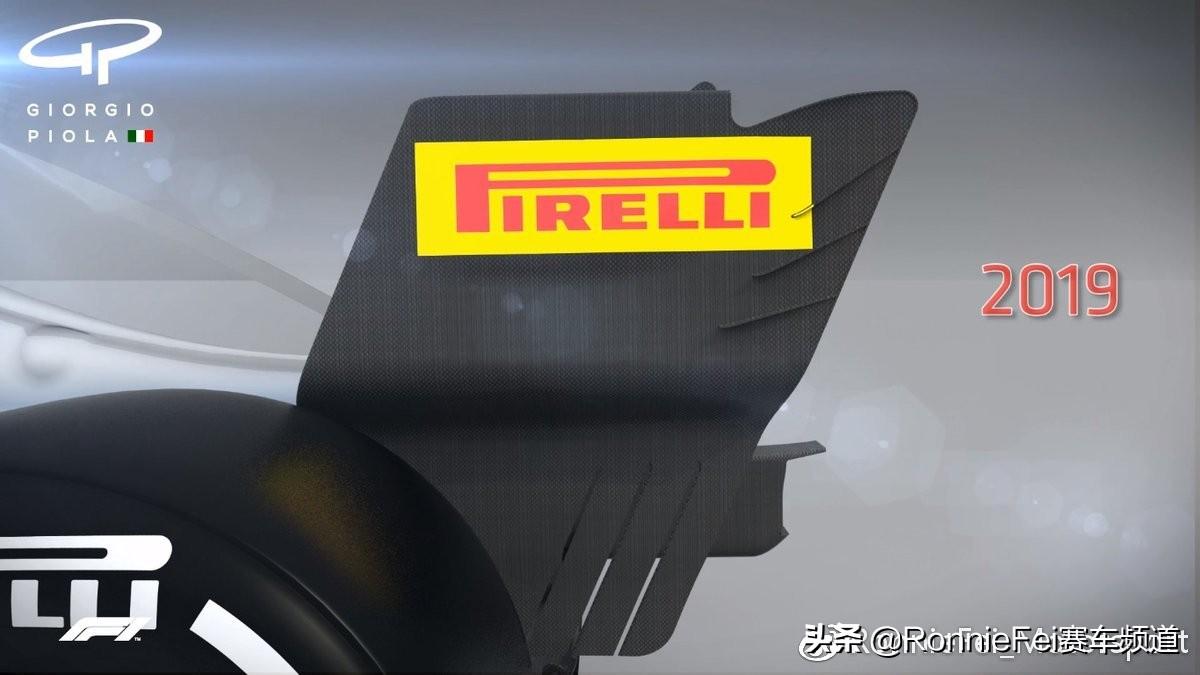【2019年F1空气动力学新规则详解】
2019赛季规则变化的关键目标-更精彩的比赛和更多的超车,通过Giorgio Piola和马克休斯的技术团队出品的视频中,我们可以更清楚的了解2019款赛车与2018款有什么不同。
在像F1这样有竞争力的运动中,各方之间的团结并不总是存在的,但是当谈到未来的规则时,从车迷、国际汽联、F1到车队和车手,每个人都是团结一致的,他们相信,缩小各车队之间的竞争差距和更多的超车必须是优先考虑的。
这些考虑是一个关键因素,因为国际汽联与帕特·西蒙兹领导的F1空气动力学团队合作,继续努力制定2021年的技术规则。但我们不必再等三年才能看到这项研究的第一批成果。事实上,最初的版本将很快到来,一些重大的空气动力学变化将在下个赛季推出,以增加F1赛车的观赏性。
文字版总结如下(中英文对照版):
— A simplified front wing with standardised endplates, tweaked dimensions and no upper flaps. This will encourage aerodynamicists to direct more of the flow to the underbody (where it is less sensitive to the disturbed wake of the car in front) than the outer body.
— 简化前翼空力套件、标准化前翼两侧终板并调整尺寸大小,取消前翼上的垂直襟翼扰流板,这将鼓励空气动力学家将更多的气流引导到车辆底部(这将减少前车气流对于后车的影响)而不是外部。
— The deletion of the upper flaps at the outer ends of the wing will make it impossible to create the vortices that are generated by the current, highly complex endplates to enhance the outer-body aerodynamics. This will further encourage the so-called ‘inwash’ aero philosophy of directing airflow to the underbody, rather than the current emphasis on ‘outwash,’ which is highly sensitive to the air from the car ahead and therefore makes it harder for cars to follow one another closely
— 删除前翼外端的上襟翼扰流板就不可能产生复杂的旋涡气流,可以加强外部空气动力学。这将进一步鼓励所谓的“inwash”空气动力学,即引导气流流向车辆底部,而不是目前强调的“outwash”,因为“outwash”对前方汽车的尾流会有高度敏感导致很难进行近距离的跟车,更别说超车了!
— Tweaks to the front wing’s dimensions and the limiting of under-wing strakes to two each side to further discourage outwash aerodynamics
— 调整前翼的尺寸,并限制前翼下两面侧壁,进一步抑制向外的空气动力学。
— Winglets mounted on the brake ducts currently play a part in directing the flow to the outer part of the body. These are banned from 2019, as are blown axles, which currently use air directed out of the centre of the wheel at high speed to energise the flow down the outer surfaces of the bodywork further back

— 安装在制动导管上的翼片在引导气流流向身体外部方面起着一定的作用。这些从2019年将被禁止,这些进风口在车辆高速从时候,将气流从车轮中心导向气流进一步向后流。
— Barge boards are lowered by 150mm (to make them less powerful in directing the airflow) and moved forwards by 100mm to make them less sensitive to the airflow being disturbed from the car in front
— 侧箱两侧端板降低150毫米(使其在引导气流方面的效果减弱),并向前移动100毫米,使其减少对前车的气流的影响。

— The rear wing endplates will no longer be permitted to have horizontal gills. These equalize the pressure between the inner and outer faces of the endplate to give a faster flow over the top of the wing for more downforce, but they introduce an extra disturbance to the wake, which worsens the performance of the car behind
— 尾翼端板将不再允许有水平鳃。这样可以平衡端板内面和外表面之间的压力,从而在尾翼顶部产生更快的流速,以获得更大的下压力,但产生的尾流会带来额外的干扰,从而影响到后车的性能。
— The DRS opening will be increased from 65mm to 85mm. Together with an increase in width and height of the wing, this will make the DRS around 25-30% more powerful so as to allow it to be effective on those circuits with too short a straight for the current system. The FIA will also review the length of DRS zones at every circuit in order to maximise the effect of the changes
— DRS开口将从65 mm增加到85 mm,加上尾翼的宽度和高度的增加,这将增加DRS大约25%-30%的提升,使它能够有效地对那些直道过短的赛道上发挥更好的超车作用,国际汽联也会重新规划每条赛道的DRS区域的长度,以尽量带来改变。
— The increased height of the wing will take the ‘rooster tail’ wake coming off the back of it higher into the air than currently. More of the energy from that wake will be diffused into the free air around it before it returns to the level where it will be affecting the following car
— 随着尾翼高度的增加,车辆尾部产生的气流会比现在的高度更高,在气流回归正常高度之前,更多的尾流将扩散到车辆后方周围,这将对后车产生影响。

限 时 特 惠: 本站每日持续更新海量各大内部创业教程,一年会员只需98元,全站资源免费下载 点击查看详情
站 长 微 信: lzxmw777






